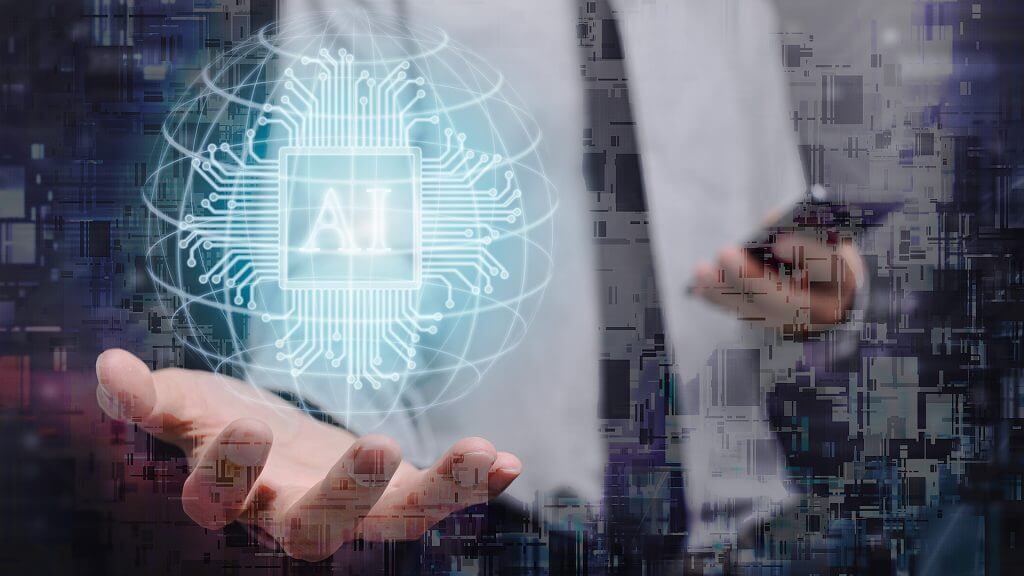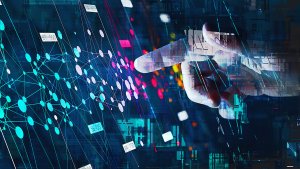
Welcome to the groundbreaking world of Artificial Intelligence (AI), where every day brings new advancements and possibilities. At the heart of modern AI lies foundational models – complex algorithms that have revolutionized how machines learn and interact. These models are not just the backbone of AI; they are its central nervous system, enabling groundbreaking applications in various fields.
AI’s journey began with simple task automation, but today, it stands at the cusp of a new era. Foundational models have paved the way for more intuitive, intelligent machines that learn from vast data sets, mimicking human cognitive abilities. This evolution marks the dawn of a new age in digital intelligence, where AI’s potential is limited only by our imagination.
Demystifying AI: From Basic Queries to Complex Reasoning
Artificial Intelligence (AI) has transcended its status as a futuristic concept to become an integral part of our daily lives. It’s no longer just about executing basic commands or answering simple questions. AI’s real power lies in its sophisticated ability to infer, reason, and problem-solve, which elevates it from a digital assistant to an intelligent partner in our day-to-day activities.
Beyond Basic Queries: Understanding Context and Preferences
When interacting with AI, such as voice assistants or recommendation systems, we’re engaging with more than just a responsive machine; we’re interacting with a system that learns and adapts. These AI systems are designed to understand the nuances of human preferences and contexts. For example, when you ask an AI assistant for restaurant recommendations, it doesn’t merely return a list of nearby places. Instead, it delves into a deeper analysis, taking into account your past dining experiences, preferred cuisines, and even specific dietary needs. It might even consider the current weather, suggesting cozy indoor spots on a rainy day or restaurants with outdoor seating during a sunny afternoon.
AI’s Leap into Problem-Solving
The transition from merely regurgitating data to actively solving problems is a significant leap for AI. This shift is powered by complex algorithms and machine learning techniques that enable AI systems to analyze large sets of data, recognize patterns, and make predictions or decisions based on that analysis. For instance, in healthcare, AI algorithms can review and interpret medical images, aiding in early and accurate diagnosis of diseases. In the realm of finance, AI systems analyze market trends and individual investment patterns to offer personalized investment advice. This capability to process and synthesize vast amounts of information quickly and accurately is transforming how we approach problem-solving across various fields.

AI as a Decision-Maker
One of the most remarkable aspects of AI’s reasoning ability is its role in decision-making processes. AI systems can evaluate multiple variables and potential outcomes to assist in making informed decisions. In business, AI-driven data analysis helps in identifying market opportunities and risks, leading to better strategic planning. In urban planning, AI can analyze traffic patterns and public transport usage to recommend improvements in city infrastructure.
The Human-AI Collaboration
An essential aspect of AI’s reasoning and inference capabilities is how they complement human intelligence. AI does not replace human decision-making but enhances it. By handling data-intensive tasks, AI frees up humans to focus on more creative, strategic aspects of problem-solving. This collaboration between human intuition and AI’s analytical prowess is leading to more innovative solutions in every sector.
The Future of AI Reasoning
As AI continues to evolve, its ability to reason and solve problems is only going to get more sophisticated. With advancements in natural language processing and deep learning, AI systems will become more adept at understanding and interpreting human language, emotions, and even cultural nuances. This will lead to more natural, intuitive interactions between humans and AI, making AI an even more integral and seamless part of our daily lives. AI’s journey from handling basic queries to complex reasoning and problem-solving signifies a pivotal shift in technology’s role in our lives. As AI becomes more ingrained in our daily routines, its ability to understand, reason, and collaborate will continue to unlock new possibilities, making our interactions with technology more meaningful and productive.

Bridging the Gap: AI’s Leap into Real-Time Data Analysis
The realm of Artificial Intelligence (AI) has experienced a transformative leap with its newfound ability to access and analyze real-time data. This advancement overcomes a fundamental limitation that AI systems previously faced – reliance on historical data. While historical data is valuable, it often lacks the immediacy and relevance of current information, especially in fast-paced environments.
The Advent of Retrieval-Augmented Generation
Retrieval-augmented generation marks a significant milestone in AI’s evolution. This innovative approach enables AI systems to dynamically retrieve and integrate information from various contemporary sources. It’s akin to giving AI a real-time feed of information, ensuring that the data it processes and acts upon is current and relevant.
Enhancing AI’s Responsiveness to Current Events
This capability dramatically enhances AI’s responsiveness to current events and situations. In the past, an AI analyzing stock market trends, for example, would primarily use historical data, which, while insightful, could miss sudden market shifts or emerging trends. With real-time data analysis, the AI can now incorporate the latest market movements, news updates, and financial reports, leading to more accurate and timely predictions and advice.
Real-Time Data in Healthcare
In healthcare, the implications are profound. Retrieval-augmented generation allows AI systems to access the latest medical research, clinical trials, and patient data. This means that healthcare professionals can receive up-to-date information and insights, which is crucial in a field where new discoveries and treatments are continually emerging. For instance, an AI system can assist doctors by providing the latest research on a rare disease or updating treatment protocols based on the most recent clinical data.
AI in Emergency Response and Public Safety
Another critical application of this technology is in emergency response and public safety. AI systems equipped with real-time data analysis can monitor weather conditions, traffic flows, and other environmental factors to aid in disaster response and management. For example, during a natural disaster, AI can analyze incoming data from various sources to help predict the disaster’s path, assess the damage in real time, and optimize rescue and relief efforts.
The Future of Real-Time Data Analysis in AI
The integration of real-time data analysis into AI opens up a plethora of possibilities across various sectors. It allows businesses to respond more swiftly to market changes, enables governments to better manage public services, and empowers scientists with the latest research findings. As AI continues to advance, its ability to process and analyze real-time data will become even more sophisticated, further narrowing the gap between data collection and decision-making. The leap into real-time data analysis signifies a critical advancement for AI. It not only enhances the accuracy and relevance of AI’s outputs but also broadens the scope of its applications, making it an even more powerful tool in our increasingly data-driven world.
Tailoring AI for Industry-Specific Needs
AI’s versatility allows it to be tailored for a wide range of industry-specific applications. In healthcare, AI is being used to develop personalized treatment plans, while in finance, it’s employed for fraud detection and risk assessment. The potential for synthetic reasoning with AI is limitless, paving the way for innovative solutions tailored to specific industry needs. For instance, in agriculture, AI-driven predictive models are being used to forecast crop yields and optimize farming techniques. In retail, AI is transforming customer experiences through personalized shopping recommendations. These examples underscore AI’s ability to adapt and provide targeted solutions across various sectors.

Expanding the Horizons: AI’s Growing Versatility
AI’s capabilities are continuously evolving, expanding its range of skills. One area of significant growth is in data representation and coding assistance. AI can now help automate these processes, increasing efficiency and accuracy. This evolution from single-task models to multi-skilled entities is a testament to AI’s growing versatility. The ability of AI to understand and manipulate data has transformed industries. In software development, AI assists in code generation and bug detection, streamlining the development process. In data analysis, AI’s advanced algorithms can sift through vast datasets, uncovering insights that would be impossible for humans to detect on their own.
The Artistic Side of AI: Visual Creativity and Iterative Processes
AI is not just about numbers and data; it has a creative side too. In the realm of visual design and art, AI is making significant strides. Through iterative processes, AI-generated imagery is being refined to levels that rival human creativity. This venture into visual arts showcases AI’s ability to learn and adapt creatively. AI algorithms can analyze thousands of artworks, learning styles and techniques, and then create unique pieces. The iterative process involves continuous refinement, where each iteration improves upon the last, leading to stunning, intricate designs that push the boundaries of conventional art.
Personalizing the AI Experience: Data Management and Custom Communication
AI is becoming increasingly personalized, offering tailored experiences in data management and communication. In the realm of personal data organization, AI helps manage emails, schedules, and more, adapting to individual preferences and working styles. The ‘Sound Like Me’ feature in some AI systems exemplifies this personalization. These systems can mimic an individual’s communication style, making interactions more natural and personal. This capability extends beyond mere convenience, fostering a sense of familiarity and ease in digital communication.
AI as a Productivity Powerhouse in the Workplace
In the workplace, AI is proving to be a productivity powerhouse. It assists in meeting analyses, email summarization, and complex decision-making processes. By handling routine tasks, AI frees up human employees to focus on more creative and strategic work. For instance, AI-driven tools can analyze meeting transcripts to highlight key points and action items, streamlining post-meeting follow-ups. In decision-making, AI provides data-driven insights, helping businesses make more informed choices in complex scenarios.
The Road Ahead: AI’s Boundless Potential and Ethical Considerations
As we reflect on AI’s rapid progression, it’s important to consider the ethical implications of its expanding role. The boundless potential of AI brings with it questions about privacy, bias, and the future of employment. These societal implications require careful consideration and proactive management. As AI becomes more integrated into our lives, it’s crucial to ensure that it’s developed and used responsibly, with a focus on benefiting society as a whole.
Embracing AI’s Transformative Journey
In summarizing the key insights from our exploration of AI’s future, it’s clear that AI is not just a technological tool; it’s a transformative force shaping our technological and societal landscape. As we embrace this journey, it’s vital to approach AI with curiosity, responsibility, and an open mind. AI’s potential is vast, but its true value lies in how we choose to harness it. As we continue to innovate and explore, let’s remember that AI is a partner in our journey toward a smarter, more connected world. Embrace the future with AI50. Explore how AI can transform your business and life. Visit ai50.ai for more insights and consultation on the latest AI innovations.
Frequently Asked Questions
AI learns and adapts through a process called machine learning, which involves algorithms analyzing data and improving their performance over time. This process starts with training, where the AI is fed large datasets. These datasets might include images, text, or other forms of data, depending on the task. As the AI processes this data, it identifies patterns and learns how to make decisions or predictions based on its observations. Over time, and with more data, the AI becomes more accurate and efficient at its tasks. This adaptive learning capability is what enables AI to handle new, unfamiliar situations and tasks. For example, an AI trained in language translation can adapt to new dialects or slang, improving its translations over time.
Absolutely! AI can be customized to meet the unique needs of different industries, providing solutions that address specific challenges and objectives. In healthcare, for instance, AI algorithms can analyze medical images to assist in diagnosing diseases, or they can sort through patient data to personalize treatment plans.
In finance, AI is used for fraud detection by monitoring transaction patterns, and in retail, it enhances customer experience through personalized shopping recommendations based on purchasing history. The key to tailoring AI for specific industries lies in training the AI models with relevant data. For instance, AI used in agriculture would be trained with data related to weather patterns, soil conditions, and crop health to make accurate predictions for farming.
The ethical considerations surrounding AI are numerous and complex. Data privacy is a major concern, as AI systems often require access to vast amounts of personal and sensitive data. Ensuring this data is handled securely and responsibly is paramount. Another issue is bias in AI algorithms, which can occur if the data used to train the AI is not diverse or if the algorithm design has inherent prejudices.
This can lead to unfair or discriminatory outcomes in areas like job recruitment or loan approvals. Additionally, the impact of AI on employment, with automation potentially displacing jobs, raises questions about economic inequality and workforce retraining. It’s crucial for developers and users of AI to address these ethical challenges proactively, ensuring AI is used in a way that benefits society and minimizes harm.
AI is revolutionizing the workplace in several ways. It automates routine tasks, such as data entry or scheduling, freeing up employees to focus on more complex, creative work. AI also enhances decision-making by providing data-driven insights. For instance, AI can analyze market trends and customer behavior to inform business strategies. In areas like project management, AI tools can predict project timelines and identify potential bottlenecks before they occur.
Additionally, AI’s role in facilitating remote work and collaboration has become increasingly important, as it can manage and streamline communication across different platforms and time zones. Overall, AI is not just a tool for increasing efficiency; it’s becoming a partner in redefining how we work and collaborate.
If you have more questions or are interested in learning how AI can be specifically applied to your industry, visit ai50.ai for detailed insights and personalized consultation.
If you found this blog informative and thought-provoking, please share it on your social platforms. Visit AI50 for more insights into the transformative power of AI.







